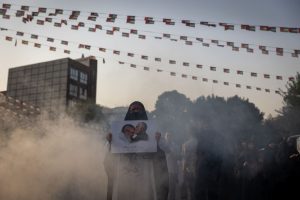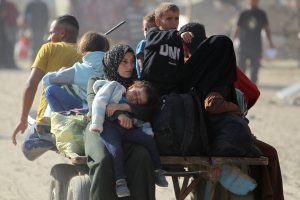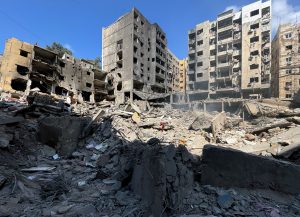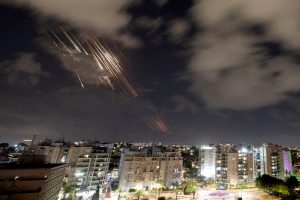Near the point where Israel, Lebanon and the Mediterranean Sea meet, Israeli soldiers were patrolling a forest when they spotted something strange—a small patch of green paint on a tree.
It was a tipoff that led troops to find what Israeli officers said was one of hundreds of hide-outs that Hezbollah had built along the border to prepare for an incursion into Israel. Inside the shallow bunker were combat boots, fatigues, a small device for getting solar electricity and an explosive comprising eight interconnected mines that Israeli officers said could be used to blow up the border wall for militants to go through.
In the two weeks since Israel sent troops en masse into Lebanon for the first time in 18 years , soldiers are scouting hilly forests and often-deserted villages, engaging in close combat with Hezbollah, and occasionally walking into ambushes.
Their goal, Israeli officials said, is to find and destroy bunkers and other military infrustucture that Hezbollah developed over many years to facilitate its own ground maneuver into northern Israel. Israeli officials describe the operation as limited to removing the border threat and thus allowing the tens of thousands of Israelis evacuated from northern Israel to return to their homes.
“It’s about a sense of security,” an Israeli official said. “We need to show our citizens that we’re destroying infrastructure close to the border.”
In the process, they are reshaping the swath of southern Lebanon on the border, cutting new roads into the mountainsides for troops and bulldozing homes they say were used by Hezbollah, a U.S.-designated terrorist organization . Tens of thousands of people have been displaced from southern Lebanon and more than 2,100 killed since Israel and Hezbollah began trading blows after the Oct. 7, 2023, attack by Palestinian militant group, Hamas, sparked the war.
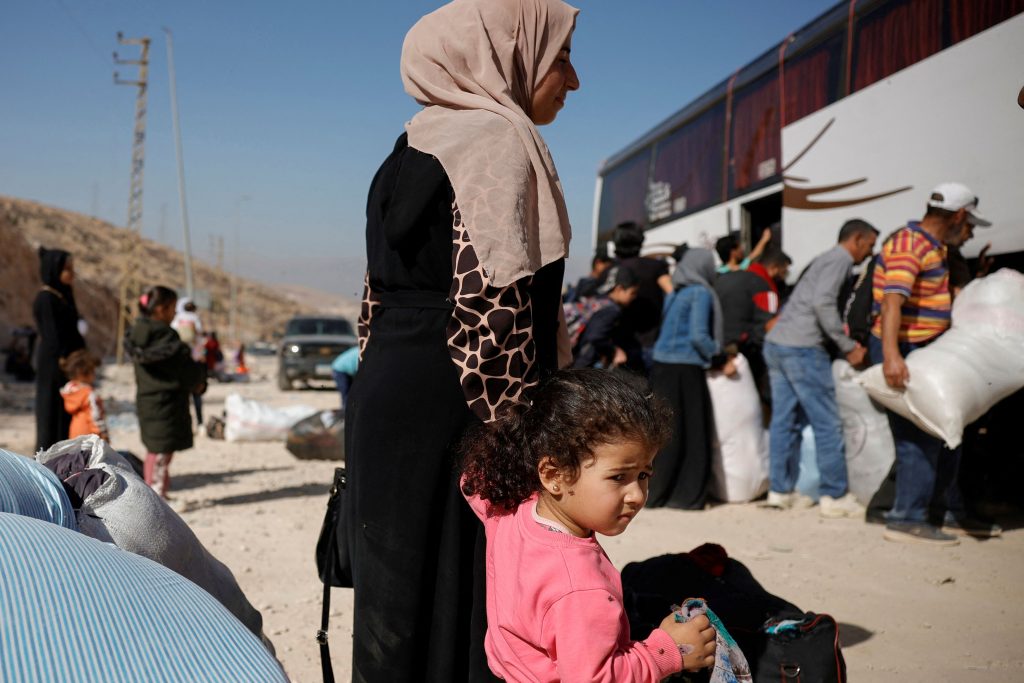
People board a bus provided by the Syrian Arab Red Crescent, after crossing from Lebanon into Syria on foot, at the Masnaa border crossing, after Israeli strikes earlier this month that Lebanon’s transport minister said had closed off the road to vehicles, October 14, 2024. REUTERS/Louisa Gouliamaki
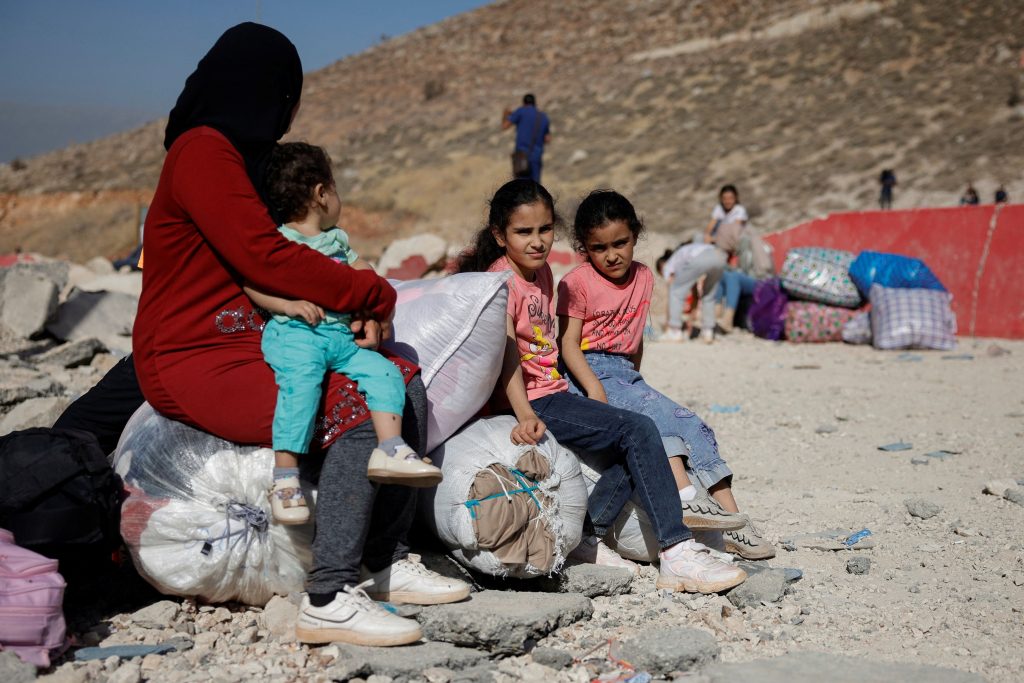
People wait for further transportation after crossing the damaged part of the road at the Masnaa border crossing, after Israeli strikes earlier this month that Lebanon’s transport minister said had closed off the road to vehicles, October 14, 2024. REUTERS/Louisa Gouliamaki
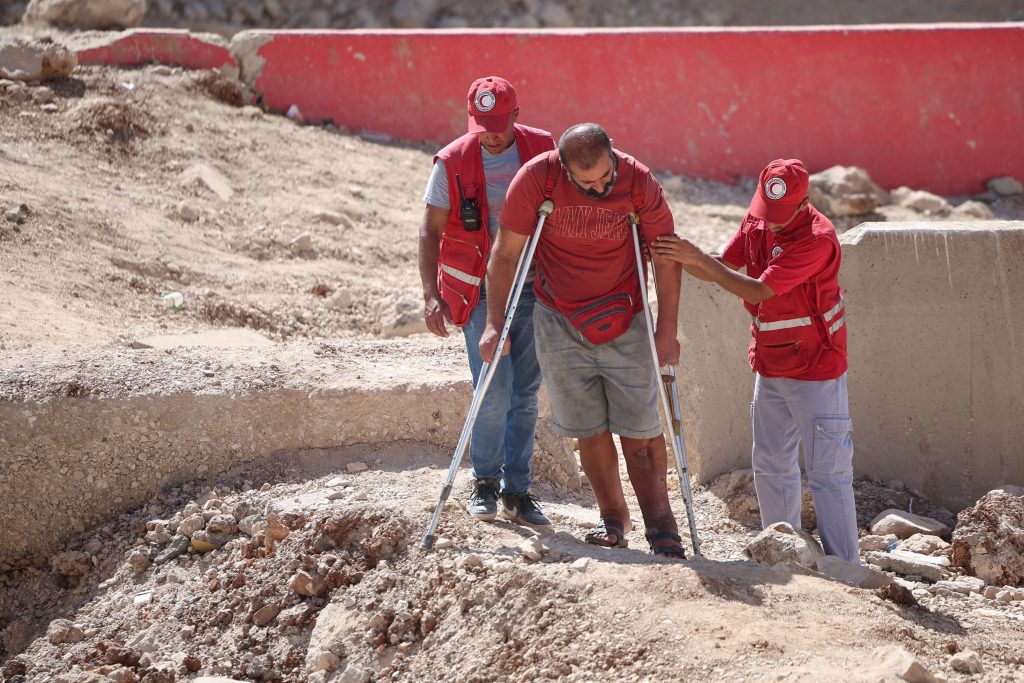
A disabled man is helped by Syrian Arab Red Crescent at the Masnaa border crossing, after Israeli strikes earlier this month that Lebanon’s transport minister said had closed off the road to vehicles, October 14, 2024. REUTERS/Louisa Gouliamaki
Israel’s Lebanon ground offensive is a much different and more dangerous operation than the exploding pagers and walkie-talkies, targeted killings and air campaign that preceded it—direct contact with a foe in a mountainous battlefield that Hezbollah has spent years preparing. Israel’s previous ground operations in Lebanon were also meant to be narrow in scope, but its 1982 invasion turned into an 18-year occupation and the 2006 campaign was a stalemate.
“With a ground campaign, you know where you’ll start, but don’t know where you’ll finish,” said Danny Citrinowicz , a former Israeli military intelligence official and now a fellow with the Tel Aviv-based Institute for National Security Studies.
Israeli troops were ambushed on the second day of the incursion.
A group of commandos had crossed the border in the dark and swept through the village of Kfar Kila looking for Hezbollah hide-outs and weapons. Just as the sun began to rise, they were hit by an explosion. Hezbollah fighters in fortified positions then opened fire from multiple directions using rifles and antitank missiles. A 60-millimeter mortar dropped into the middle of the team.
Israeli drones and artillery provided support as the soldiers fought to recover the dead and carry out the injured under heavy fire. When the smoke cleared, at least six soldiers were dead, including one from a unit specializing in tunnel warfare, the first Israeli deaths in the ground offensive and still the deadliest incident since it began overnight Oct. 1.
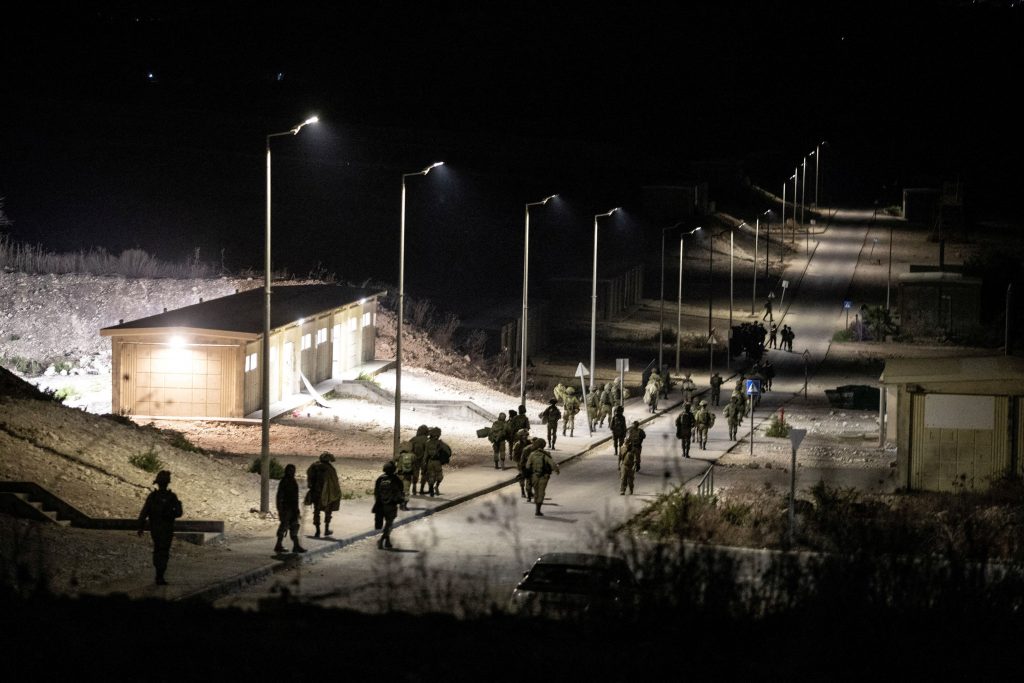
Israeli soldiers walk near the scene where a drone from Lebanon attacked Israel, amid cross-border hostilities between Hezbollah and Israel, in Binyamina Israel, October 13, 2024. Lebanon’s Hezbollah claimed responsibility for the attack. REUTERS/Itay Cohen/File Photo
“It’s a night battle that developed into a day battle, operationally challenging, with a fortified enemy that fired from several directions,” an Israeli military official said. “We are learning from the incident.”
At least 11 soldiers have been killed inside Lebanon. Israel doesn’t disclose the number of injured soldiers, but a military official said the injuries were around double to triple the number of deaths.
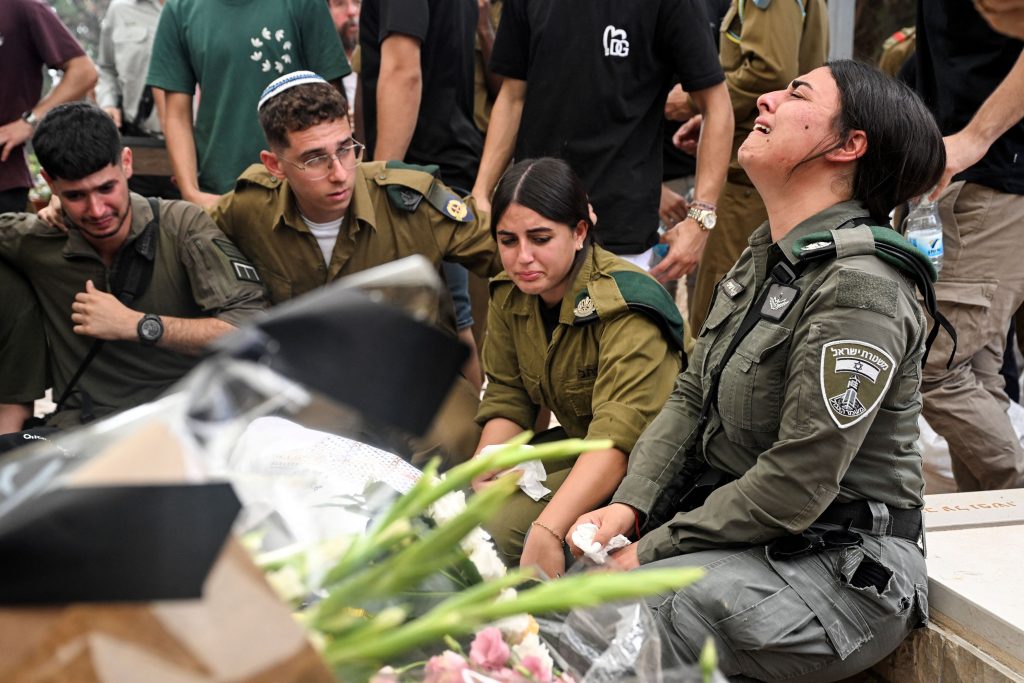
An Israeli border police officer and Israeli soldiers mourn Sergeant Yoav Agmon, who was killed in a drone attack from Lebanon which Hezbollah claimed responsibility for, amid cross-border hostilities between Hezbollah and Israel, during his funeral in Binyamina-Givat Ada, Israel, October 15, 2024. REUTERS/Rami Shlush
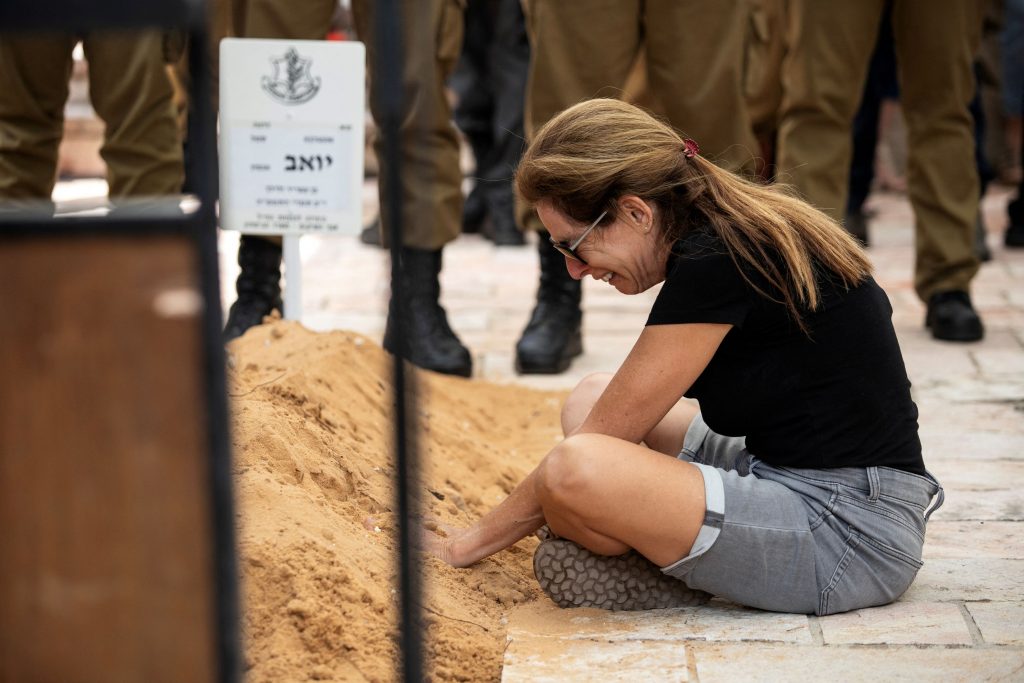
The mother of Israeli soldier Sergeant Yoav Agmon, who was killed in a drone attack from Lebanon for which Hezbollah claimed responsibility, mourns during his funeral, amid cross-border hostilities between Hezbollah and Israel, in Binyamina-Givat Ada, Israel, October 15, 2024. REUTERS/Itay Cohen
Twenty-five soldiers were injured in another ambush Sunday, the military said. The troops were entering Ramya, a village located in the central border area where Israel began operating late last week, when Hezbollah hit them with an explosive device followed by a volley of gunfire and midrange weapons such as antitank missiles, the militant group said.
A tank fleeing the attack ended up reversing into a United Nations peacekeeping base before firing off smokescreen rounds to help evacuate soldiers, an Israeli military spokesperson said, an incident that drew criticism from the peacekeepers.
Israel claims to have killed hundreds of Hezbollah fighters. Hezbollah didn’t reply to a request for comment on the figures. The militant group has announced the deaths of more than 500 fighters over the past year but stopped giving updates around the time that Israel invaded.
There are also moments of relative quiet for the troops.
In the forests west of Labbouneh, where Israeli troops found the Hezbollah hide-out, infantry recently moved in small groups on new dirt roads that military bulldozers had carved into the mountainside. A few tanks waited just on the other side of a border wall that had been breached. Amid the trees, Israeli reservists rested on foam mats, some eating watermelon with a knife.
“Most of the resistance we have met hasn’t been face to face, but explosives left behind and a lot of mortar and rocket fire,” said an Israeli major who was fighting inside Lebanon. “They cannot be a target from the air because they are in underground bunkers covered by trees and dirt.”
Israel has brought more divisions into the fight every few days to expand the front along the length of the frontier. Thousands of soldiers are taking part in the campaign, moving in and out of Lebanon daily, Israeli military officials said.
Israeli officials say they have already taken truckloads of weapons back to Israel, including many advanced Russian and Chinese antitank missiles. Hezbollah has used these laser-guided weapons to attack Israeli military and civilian areas across the border. Israel’s military says it has also found and destroyed several tunnels, including a cross-border tunnel from Lebanon into Israel.
Israel began the land operation from the area of Metula, Israel’s northernmost town, surrounded by Lebanon on three sides and the community most affected by Hezbollah’s attacks over the past year.
From that point, Israel slowly expanded its campaign westward, each time bringing in a new division to take responsibility for the territory. This lets each division focus on mastering the terrain, said Miri Eisin , a former deputy head of the Israeli military’s combat intelligence corps.
Israeli forces have entered at least eight Lebanese villages, all within a mile from the border, according to statements by Israel, Hezbollah and geolocation of Israeli soldiers done by Le Beck, an intelligence-consulting firm. Israeli security officials said they haven’t encountered civilians yet, with most of them having fled heavy Israeli bombardment months earlier.
The soldiers have uprooted swaths of trees and bushes along the border as they hunt for bunkers and to remove cover for Hezbollah operatives, Israeli officers said.
They are using bulldozers and controlled explosions to demolish buildings, including civilian homes, where they find underground bunkers or tunnel shafts they say are part of Hezbollah fortifications, Israeli officers said.
Videos and recent satellite images show extensive damage in some villages since the ground invasion began. Drone footage of Yaroun, shared by Israeli reporters on Oct. 7, showed portions of the Lebanese border village in ruins, including a mosque. The remains of some buildings were left in neat piles, suggesting they were brought down by controlled demolitions.
Satellite images from Planet Labs in the nearby village of Maroun El Ras show a park called the Iran Garden, which included a replica of Jerusalem’s Dome of the Rock, had been largely demolished. The area, located on the eastern outskirts of the village, had been a symbolic site where senior Iranian officials made visits and extolled Hezbollah’s battle with Israel.
Israel’s military said soldiers had taken control of an underground Hezbollah base on the perimeter of the village. The satellite images of the village also showed that, in places where buildings had stood days earlier, there are now new dirt paths bulldozed by Israel.
Write to Dov Lieber at dov.lieber@wsj.com
